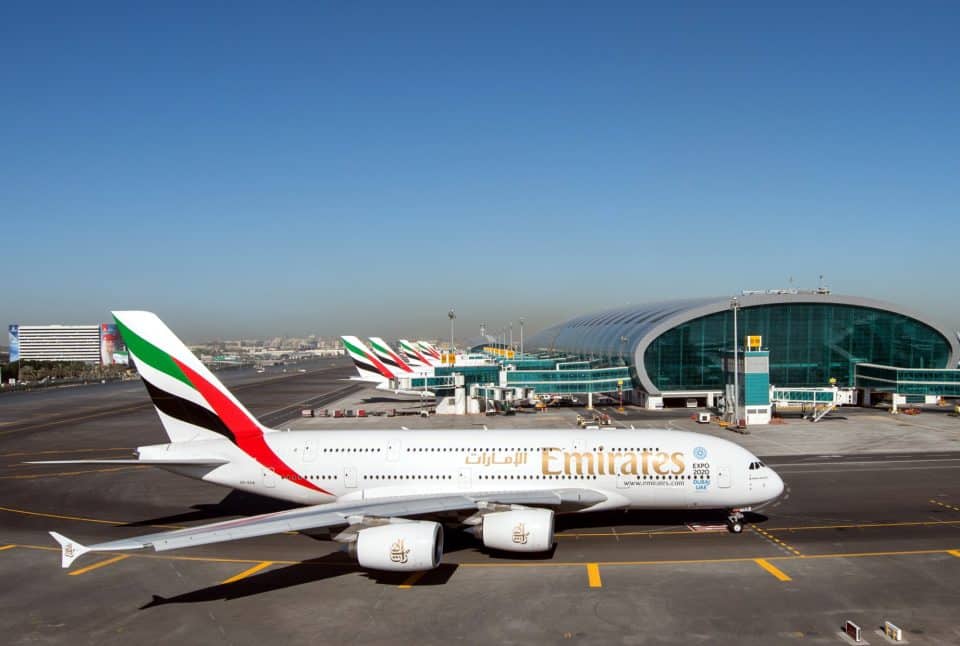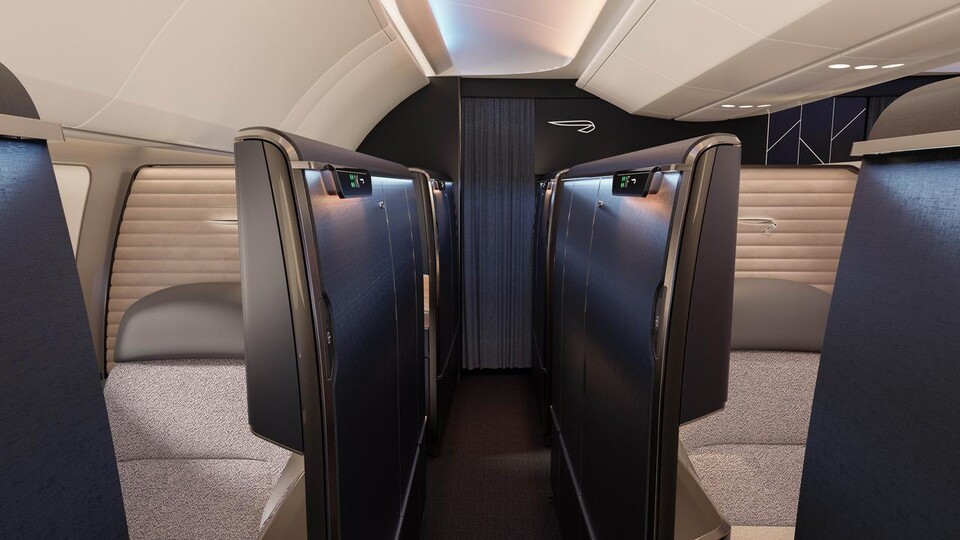Airlines
Emirates ramps up operations across continents

Emirates has boosted operations by 31% (total ASKMs) since the start of its financial year and has further plans to ramp up seat capacity in its latest published northern summer schedule starting 26 March 2023.
In the past months, the airline has planned and executed the rapid growth of its network operations – reintroducing services to 5 cities; launching flights to 1 new destination (Tel Aviv), adding 251 weekly flights onto existing routes; and continuing the roll-out of service enhancements in the air and on the ground.
Upcoming A380 deployments in Northern Summer 2023 season:
Emirates continues to scale up its A380 operations with the reintroduction of the iconic double-decker across its network: Glasgow (from 26 March), Casablanca from (15 April), Beijing (from 01 May), Shanghai (from 04 June), Nice (from 1 June), Birmingham (from 1 July), Kuala Lumpur (from 01 August), and Taipei (from 01 August).
Upcoming route enhancements by region:
Europe
- Amsterdam: from 14 to 19 weekly flights starting 02 April.
- Athens: Addition of a daily seasonal service to serve summer demand between 01 June to 30 September.
- Bologna: from 5 flights a week to a daily service starting 01 May.
- Budapest: from 5 flights a week to a daily service by 01 June.
- London: start of 2nd daily service to London Stansted on 01 May. This will take Emirates’ London operations to 11 daily flights – including 6 times daily to London Heathrow and 3 times daily to Gatwick.
- Venice: from 5 to 6 flights a week from 26 March, increasing to a daily service from 01 June.
Africa
- Cairo: from 25 to 28 weekly flights by 29 October.
- Dar es Salaam: from 5 flights a week to daily flights starting 01 May.
- Entebbe: from 6 flights a week to daily flights starting 01 July.
Australia and New Zealand
Emirates’ non-stop Australia flights will return to pre-pandemic levels to Sydney from 01 May, Melbourne from 26 March, and Brisbane on 01 June.
- Brisbane: An additional daily service starting 01 June will take Emirates to 14 flights per week to Brisbane.
- Christchurch: restart of daily service from Dubai via Sydney from 26 March.
- Melbourne: addition of 3rd daily service to Melbourne from 26 March via Singapore. This adds capacity to Melbourne and re-establishes connectivity between Singapore and Melbourne. The other 2 daily flights from Melbourne fly non-stop to Dubai.
- Sydney: addition of 3rd daily non-stop service from 01 May.
East Asia
- Bangkok: Addition of 5th daily service from 01 August.
- Beijing: To commence daily non-stop Boeing 777-300ER service from 15 March, upgrading to an A380 effective 01 May. A second daily service will commence effective 01 September with an A380.
- Hong Kong: Addition of a daily non-stop flight from 29 March. This increases Emirates’ operations to 14 weekly flights including its existing daily Dubai-Bangkok-Hong Kong service.
- Kuala Lumpur: Addition of a third daily service from 01 June.
- Tokyo: Resumption of services to Tokyo Haneda with daily flights on 02 April. This takes Emirates’ Japan operations to 21 weekly flights including a daily A380 service to Tokyo-Narita and a daily Boeing 777 service to Osaka.

Airlines
British Airways Unveils Its Brand-New First Class Cabin for the Airbus A380

British Airways has introduced its brand-new First Class seat, blending sleek design with expert British craftsmanship. Reflecting modern British luxury travel, this new cabin is part of the airline’s Airbus A380 retrofit plans, set to take flight in mid-2026.
The updated First Class cabin has been crafted to feel like a modern luxury hotel in the sky, complete with cozy touches and thoughtful British details.
Etihad Airways Unveils 10 Exciting New Routes for 2025
Designed by top experts from across Great Britain and Ireland—including London, Glasgow, West Yorkshire, Kilkeel, and Dublin—the seat reflects the best of British design and quality.
Features and Comforts
The new First Class seat is ultra-wide at 36.5 inches, with a bed length of 79 inches for ultimate comfort. It includes:
- A multi-purpose ottoman and stowable table.
- A 32-inch 4K TV screen.
- Adjustable mood lighting with modes like “relax,” “dine,” and “cinema.”
- A cocooned 60-inch curved wall for privacy while maintaining a spacious feel.
Passengers traveling together can enjoy a shared experience with a sliding divider that creates a lounge-like space. The stowable tables also allow for “buddy dining,” where two people can dine together.
The cabin’s flowing curves, inspired by the iconic Concorde wings, create a welcoming and stylish environment. Additionally, passengers can now wheel their luggage directly into their personal storage space, making settling in easier.
This country tops visa rejections in the popular Schengen countries
British Airways carefully considered customer feedback when designing this cabin. The seat includes practical storage and features like a fully rectangular bed for home-like comfort. Every detail, from usability to elegance, has been designed to enhance the travel experience.
British Airways is proud to be the only UK-based European airline offering a First Class product across the Atlantic. british airways premium economy and First Class travelers enjoy exclusive perks such as stylish seats, access to luxury lounges, fast-track security, and the First Wing at Heathrow. The airline ensures a premium experience from booking to landing.
This cabin upgrade is part of British Airways’ £7 billion investment in improving customer experiences. The airline has already introduced over 120 initiatives, including new short-haul seats, free onboard Wi-Fi messaging, and refreshed lounges worldwide.
-

 Aviation2 months ago
Aviation2 months agoMicrosoft Flight Simulator Raises $3 Million to Bring Back the An-225 Mriya
-

 Airlines2 months ago
Airlines2 months agoQatar Citizens Can Travel to the United States Without a Visa
-

 Aviation2 months ago
Aviation2 months agoQatar Airways bans these new Electronic Devices on plane
-

 Airlines2 months ago
Airlines2 months agoJapan Airlines Rolls Out Free Domestic Flights to International Passengers
-

 Defence2 months ago
Defence2 months agoWhich Country Has the Largest Fleet of Fighter Aircraft?
-

 Airport2 months ago
Airport2 months agoWestern Sydney Airport Welcomes Its First Plane After 6 Years of construction
-

 Airlines4 days ago
Airlines4 days agoDAMAC Air: Dubai’s New Luxury Airline Offers Free Flights for Registration
-

 Aviation2 months ago
Aviation2 months agoDid you know ? Once Boeing 747 carried 1088 passenger in 1991










